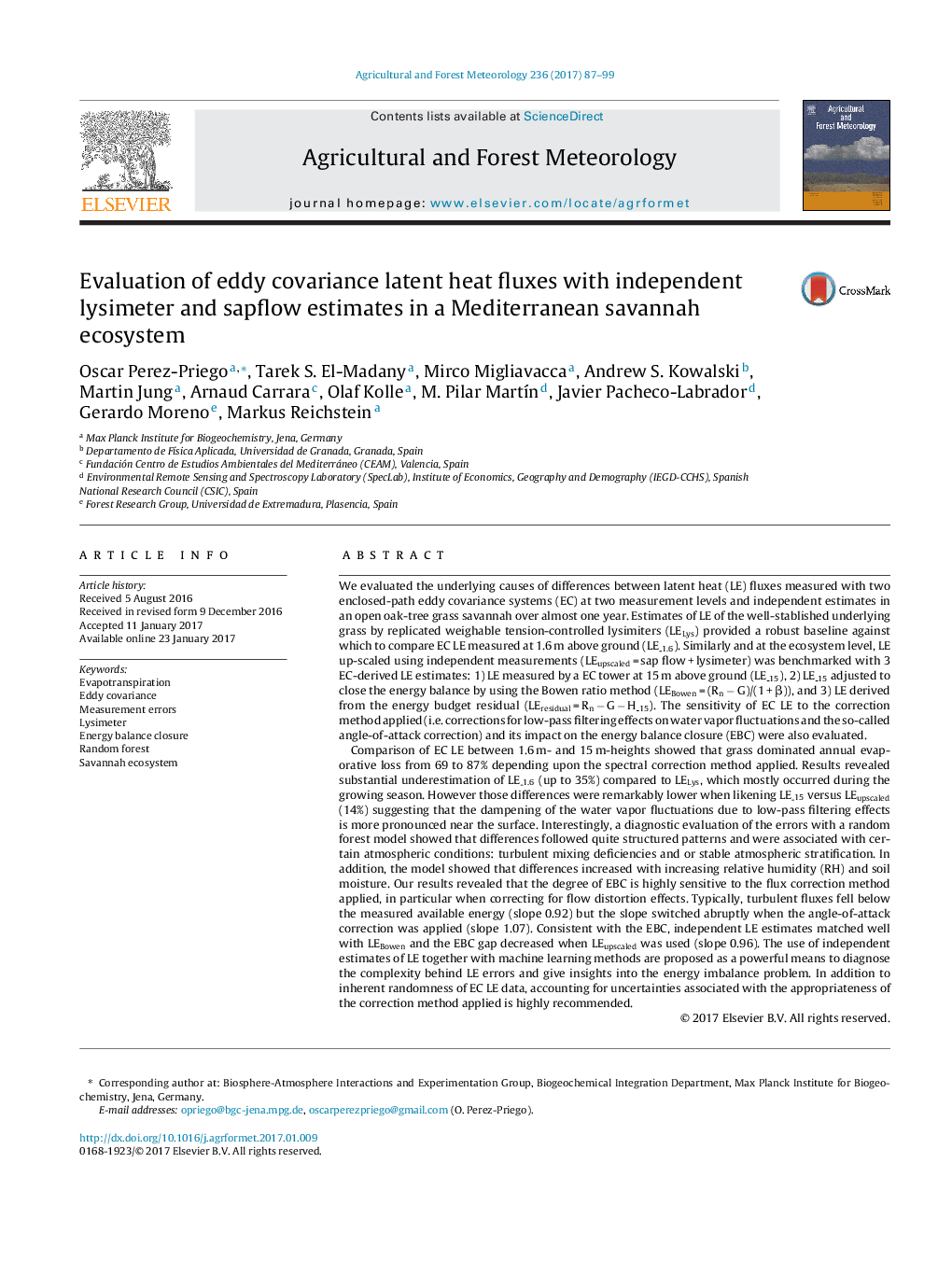| کد مقاله | کد نشریه | سال انتشار | مقاله انگلیسی | نسخه تمام متن |
|---|---|---|---|---|
| 6458032 | 1420862 | 2017 | 13 صفحه PDF | دانلود رایگان |
- Causes of errors in EC LE were evaluated with independent measurements and RF model.
- LE by EC is underestimated under certain environmental conditions.
- EC LE is highly sensitive to the choice of the correction method applied.
- Consistent energy balance closure was succeeded with independent LE estimates.
- Independent LE estimates compared well with corrected EC LE by Bowen ratio.
We evaluated the underlying causes of differences between latent heat (LE) fluxes measured with two enclosed-path eddy covariance systems (EC) at two measurement levels and independent estimates in an open oak-tree grass savannah over almost one year. Estimates of LE of the well-stablished underlying grass by replicated weighable tension-controlled lysimiters (LELys) provided a robust baseline against which to compare EC LE measured at 1.6 m above ground (LE_1.6). Similarly and at the ecosystem level, LE up-scaled using independent measurements (LEupscaled = sap flow + lysimeter) was benchmarked with 3 EC-derived LE estimates: 1) LE measured by a EC tower at 15 m above ground (LE_15), 2) LE_15 adjusted to close the energy balance by using the Bowen ratio method (LEBowen = (Rnâ G)/(1 + β)), and 3) LE derived from the energy budget residual (LEresidual = Rnâ G â H_15). The sensitivity of EC LE to the correction method applied (i.e. corrections for low-pass filtering effects on water vapor fluctuations and the so-called angle-of-attack correction) and its impact on the energy balance closure (EBC) were also evaluated.Comparison of EC LE between 1.6 m- and 15 m-heights showed that grass dominated annual evaporative loss from 69 to 87% depending upon the spectral correction method applied. Results revealed substantial underestimation of LE_1.6 (up to 35%) compared to LELys, which mostly occurred during the growing season. However those differences were remarkably lower when likening LE_15 versus LEupscaled (14%) suggesting that the dampening of the water vapor fluctuations due to low-pass filtering effects is more pronounced near the surface. Interestingly, a diagnostic evaluation of the errors with a random forest model showed that differences followed quite structured patterns and were associated with certain atmospheric conditions: turbulent mixing deficiencies and or stable atmospheric stratification. In addition, the model showed that differences increased with increasing relative humidity (RH) and soil moisture. Our results revealed that the degree of EBC is highly sensitive to the flux correction method applied, in particular when correcting for flow distortion effects. Typically, turbulent fluxes fell below the measured available energy (slope 0.92) but the slope switched abruptly when the angle-of-attack correction was applied (slope 1.07). Consistent with the EBC, independent LE estimates matched well with LEBowen and the EBC gap decreased when LEupscaled was used (slope 0.96). The use of independent estimates of LE together with machine learning methods are proposed as a powerful means to diagnose the complexity behind LE errors and give insights into the energy imbalance problem. In addition to inherent randomness of EC LE data, accounting for uncertainties associated with the appropriateness of the correction method applied is highly recommended.
Journal: Agricultural and Forest Meteorology - Volume 236, 15 April 2017, Pages 87-99
